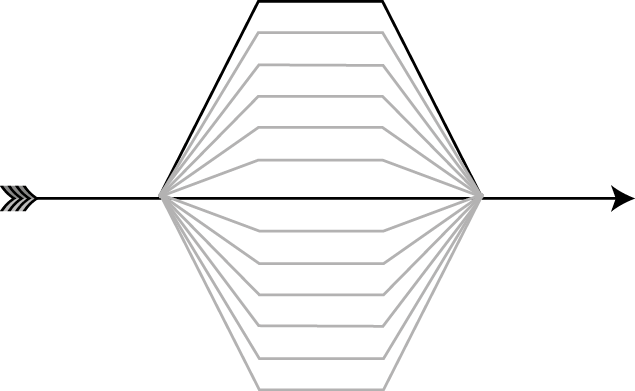#include <KSFoundation.h>
Data Fields | |
| KS_TRAP | grad |
| float | fov |
| int | res |
| int | nover |
| int | R |
| int | nacslines |
| int | acsshift |
| float | areaoffset |
| int | numlinestoacq |
| int | linetoacq [KS_MAX_PHASEDYN] |
| int | shotresalign |

KS_PHASER is a composite sequence object that is used for phase encoding. 2D Cartesian imaging requires one KS_PHASER, while 3D Cartesian imaging requires two different KS_PHASER objects, each with its own FOV, resolution and acceleration. The KS_PHASER object is set up by calling ks_eval_phaser(), but before calling this function, the following fields in KS_PHASER must be set up:
.fov: The desired image Field-of-View (FOV) in [mm] along the sequence board one intends to place the KS_PHASER on (typically YGRAD, for 3D also ZGRAD).res: The number of pixels within the FOV.nover: Number of overscans. If 0, a full-Fourier k-space will be set up. If > 0, partial Fourier will be set up (shorter scan time) where .nover number of extra k-space lines beyond .res/2. If < 0, partial Fourier will be set up, but with flipped k-space coverage. The total number of samples will be .res/2 + .nover. Values of .nover between 1 and about 16 should be avoided since half Fourier reconstruction methods will likely have difficulties..R: The parallel imaging acceleration factor.nacslines: If .R > 1, .nacslines is the number of calibration lines around k-space center for parallel imaging calibration..areaoffset: It is possible to embed a static gradient area in the phase encoding functionality of KS_PHASER. This is useful for 3D imaging, where the area needed for the rephaser of the slice select gradient can be put into .areaoffset. This makes the KS_PHASER object to act as both slice rephaser and slice phaser encoding gradient, which can shorten TE.If the KS_PHASER object is initialized with KS_INIT_PHASER, .nover, .nacslines and .areaoffset will be zero, and .R will be 1 (steps 3-6 can be skipped)
Based on the information in the KS_PHASER object, ks_eval_phaser() will set up the .grad trapezoid (KS_TRAP), .numlinestoacq, and the array .linetoacq[]. The field .numlinestoacq is an integer corresponding to the actual number of lines to acquire, which is also the number of relevant elements in .linetoacq[], containing the complete list of phase encoding lines to acquire (honoring partial Fourier, parallel imaging acceleration and ACS lines).
In the @pg section, the ks_pg_phaser() function is used to place the KS_PHASER object on a certain board at some position in time (.ampscale must be 1.0 for ks_pg_phaser()).
To acquire a given phase encoding line in scan(), ks_scan_phaser_toline() is called. For a rephaser gradient, which should undo the phase encoding gradient after the readout, the function ks_scan_phaser_fromline() is used.
It is a requirement that there is a (sequence generating) function in the @pg section (containing the ks_pg_phaser() call(s)) that can be run on both HOST and TGT. This function should be called once in cveval() (after ks_eval_phaser() and other ks_eval_***() functions). ks_pg_phaser() will throw an error on TGT if this has not been done.
| KS_TRAP grad |
Trapezoid set up by ks_eval_phaser()
| float fov |
Field-of-View (FOV) in the phase encoding direction, in [mm]. Must be set before calling ks_eval_phaser()
| int res |
Number of pixels in the FOV. Must be set before calling ks_eval_phaser()
| int nover |
Number of overscan lines without parallel imaging (i.e. # lines beyond half k-space for partial Fourier). (default: 0)
| int R |
1 [default]: Parallel imaging acceleration factor
| int nacslines |
Number of extra lines around k-space center for calibration, when R > 1
| int acsshift |
| float areaoffset |
Shift of the ACS region along the phase encoding direction For embedding e.g. a static slice rephaser in the phase encoding gradient (useful in 3D imaging)
| int numlinestoacq |
Number of lines to acquire (honoring partial Fourier and parallel imaging acceleration (R >= 1). Number of values in linetoacq[]
| int linetoacq[KS_MAX_PHASEDYN] |
Array holding the phase encoding lines to acquire. 0:first line, (.res - 1): last line
| int shotresalign |
For e.g. EPI, we want 'res' to be divisible by 2*R so that it becomes divisible by #interleaves and each ETL becomes even